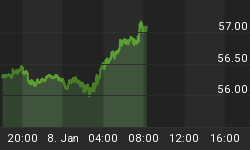The ECB succeeded in weakening the euro and bund yields with an aggressive downgrade of 2015-2017 forecasts for GDP and CPI, while announcing an increase in the issue share limit of bonds included in QE purchases to 33% from 25%. The increased limit means the ECB can buy a higher share of an individual nation's bond issue, giving it more freedom of concentration in particular issues.

CPI forecast for 2015 was downgraded to 0.1% from a previous 0.3% reading, while 2016 CPI was revised to 1.1% from 1.5%. GDP forecasts for 2015 and 2016 were also downgraded to 1.4% from 1.5% and 1.7% from 1.9% respectively.
The ECB's decision to deepen (not broaden) the purchase of individual issues does not imply an increase in the size of QE but allows it more flexibility in producing results from current level of purchases. Although Draghi asserted there was no discussion on increasing QE size and cutting interest rates, the possibility for more stimulus cannot be ruled out before year-end --another reference to "We'll do what it takes".
Draghi's pre-Fed Inaction
On a day when Eurozone composite PMIs (combining services and manufacturing)hit a 4-year high, Draghi aggressive downgrade is widelydesigned to cushion the impact of potentially euro-boosting events such as aFed decision hold rates unchanged later this month, further PBOC easing and freshCNY devaluation. All of these factors are seen as euro-positive, which wouldfurther complicate the ECB's task to achieve price stability at a time of prolongedenergy prices.The question on EURUSD implications remains that of relative interest rate differentials as much as it is about the reality of capital flows and further unwinding of euro-carry trades from unavoidable CNY weakness, once China's president returns home from G20 tour.
















